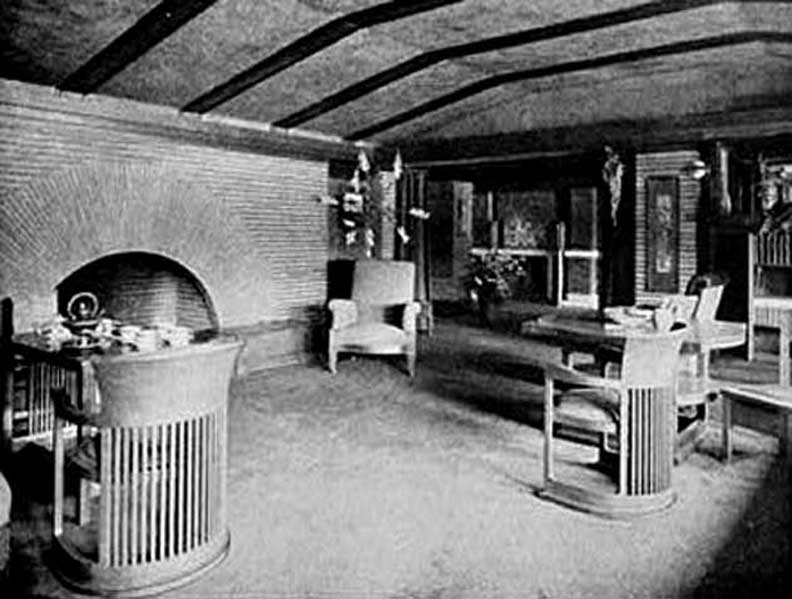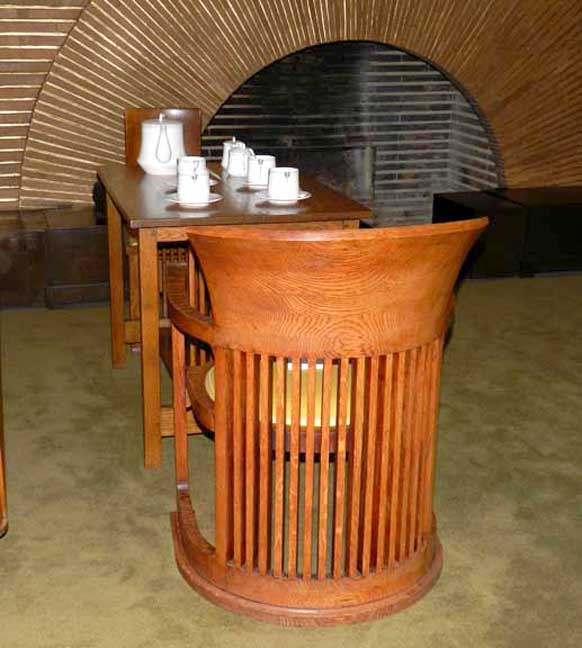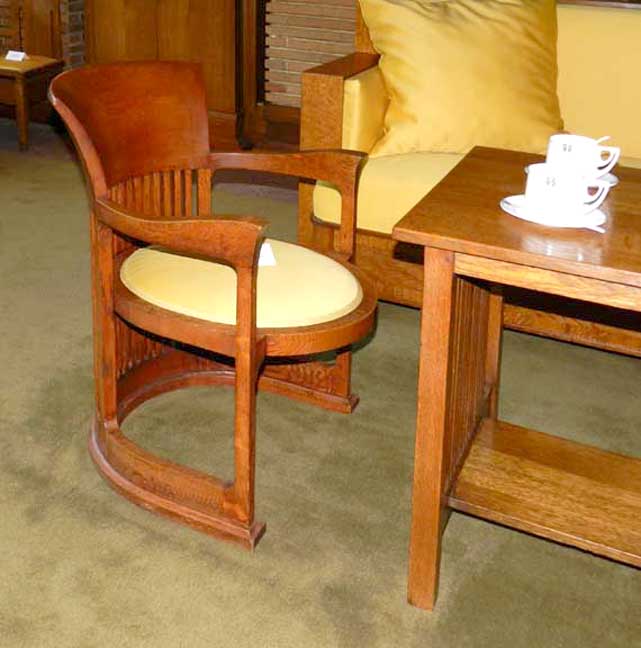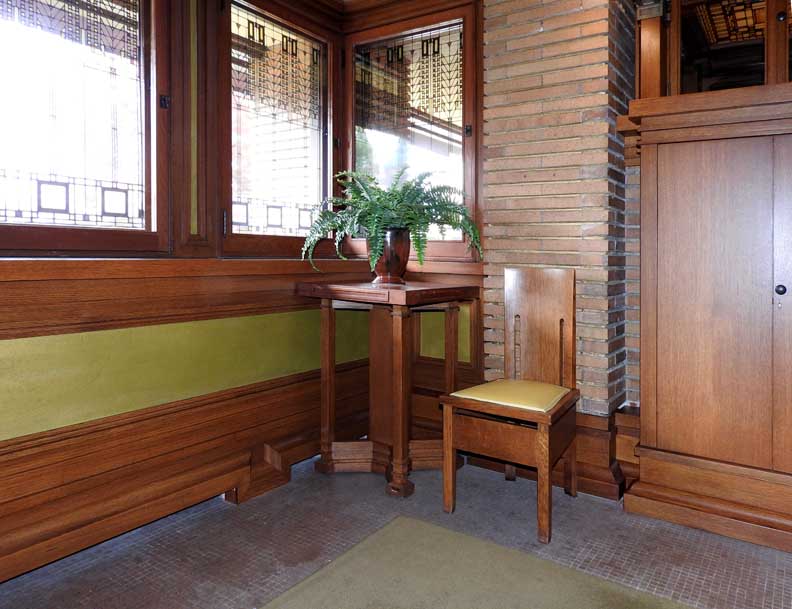Darwin D. Martin House Complex - Table of Contents
![]()
Darwin D. Martin House Complex - Table of Contents
Reception
Room and Bursar's office - Martin House
On this page below:
Reception room fireplace
Windows opposite the fireplace
Bursar's office
2011, 2012, 2018 photos
Reception room fireplace 1911 photo. 13. Historic American Buildings Survey, Plate # 51, 'Wohnhaus Martin, Buffalo, N. Y. Gesellschaftszimmer und Speisezimmer' in Frank Lloyd Wright Ausgefuhrte Bauten (Berlin: Ernst Wasmuth A. G., 1911). RECEPTION ROOM, FIREPLACE ON NORTH WALL  2011 photo. Note the lack of metal firewood storage boxes, which were added in later years  2012 photo. Sunburst fireplace features Roman bricks with gilded mortar. Note flanking firewood storage boxes  2018 photo. Gilded masonry joints (bronze color in varnish base) which are found throughout the interior  2012 photo. Detail - Firewood storage box made of bronze and radiates heat  2012 photo. Wright-designed furniture  2012 photo. Wright-designed sofa - detail  2012 photo. Wright-designed barrel chair  2012 photo.  2012 photo. Wright-designed furniture  2012 photo.  2012 photo. Wright-designed barrel chair  2018 photo.  2018 photo. Note two flower vases (detailed below:)  2018 photo.  2018 photo.  2018 photo. Edge of reception room next to the entry hall |
Windows opposite the
fireplace 2012 photo. Wright consented to the use of upholstered furniture that he did not design. Wright-designed table and chair.  2012 photo. Reconstructed radiator cover. Note narrow openings at top.  2018 photo.  2018 photo.  2018 photo. |
| Bursar's office The bursar's office was Martin's private office connected to the reception room.  2018 photo.  2018 photo. Not shown: Artificially lit skylight above the desk area (shown below:)  2018 photo.  2011 photo. The stained glass windows or "art glass" were integral to this complex. The lines of these windows are ruler straight, a design element embraced by Wright as he thought curves were representative of decadent decoration. Wright called his windows "light screens" and considered them part of the walls, not merely holes in the walls. The windows were used to create textural changes within the rooms and to control the eye and shape its vision. In Wrightian homes windows were used to create subdued illumination or a "moonlight effect". Colors and stains were carefully chosen to emit more or less light and Wright often used opaque or iridescent glass for variety and interest. Above all Wright believed his windows were an integral part of his overall design and were meant to be appreciated as works of art and most definitely not to be covered with heavy draperies.  2018 photo. Wall opposite the desks, looking out to Jewett Parkway |
